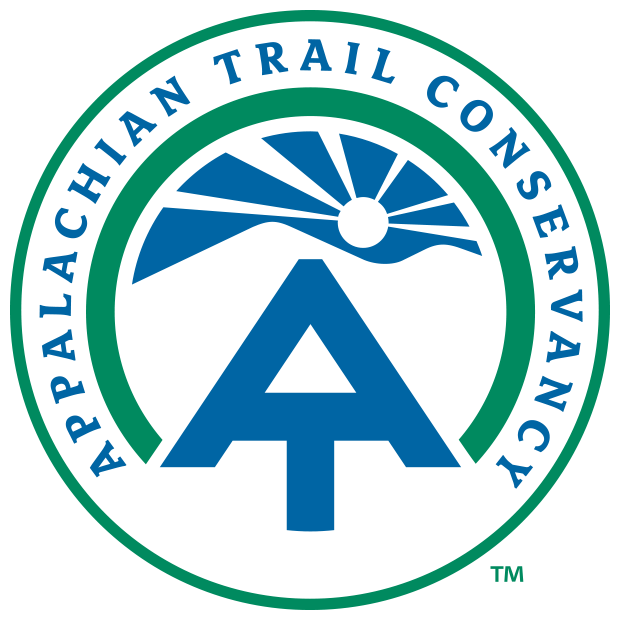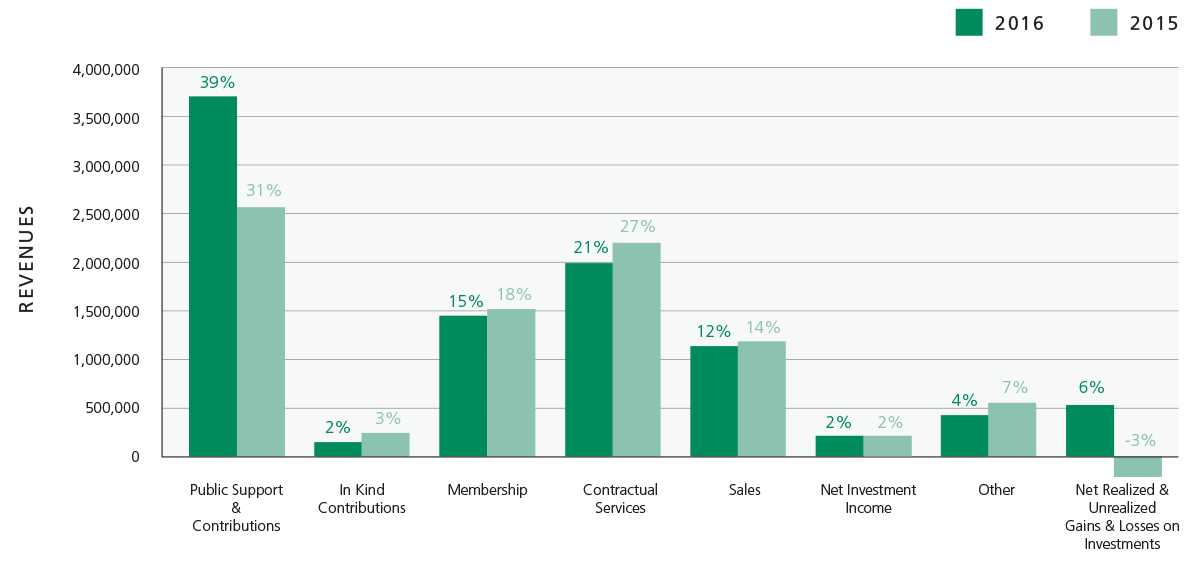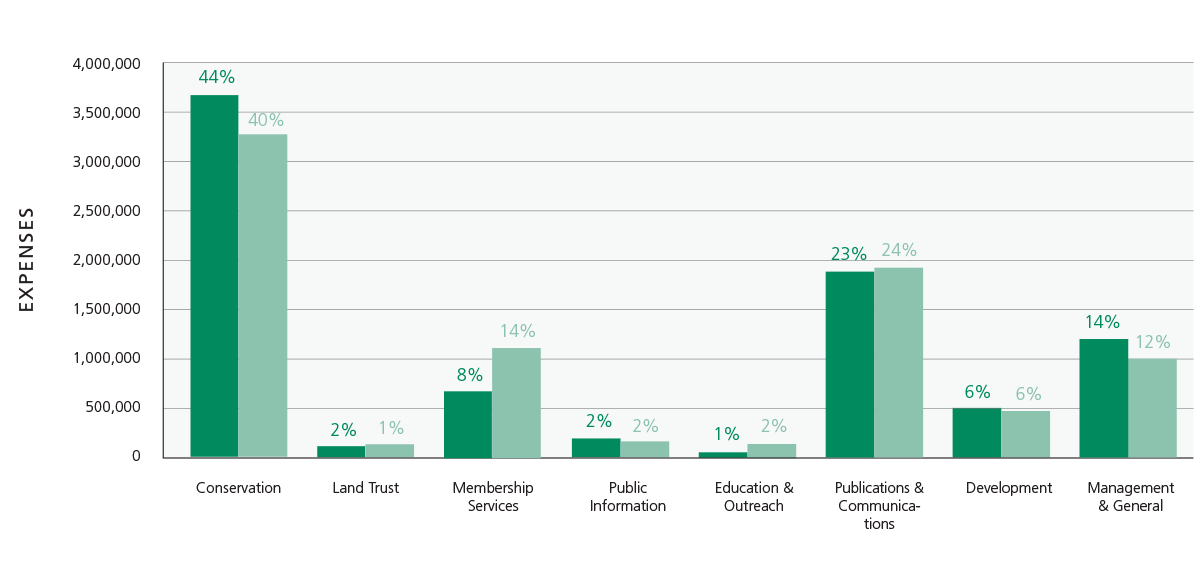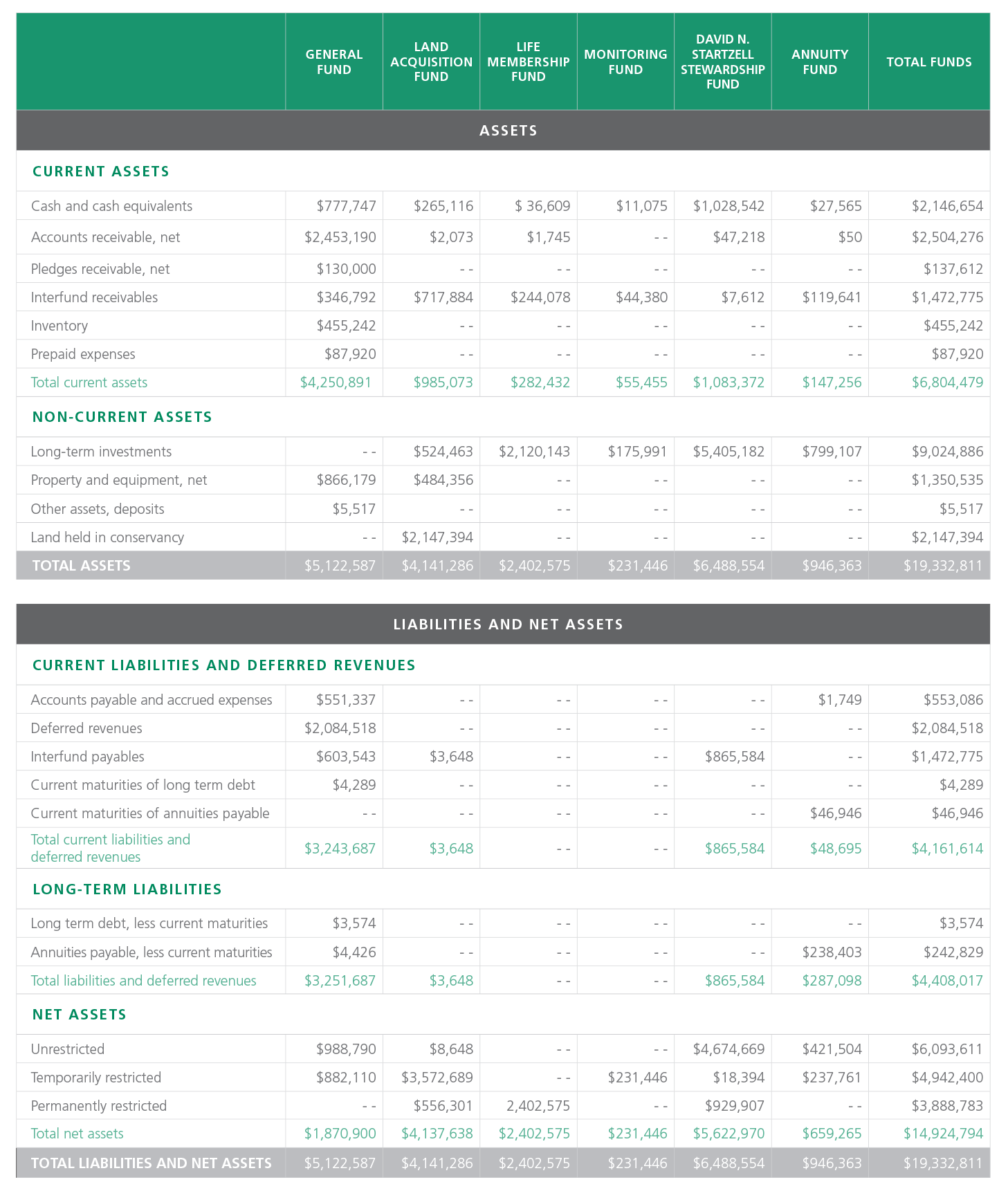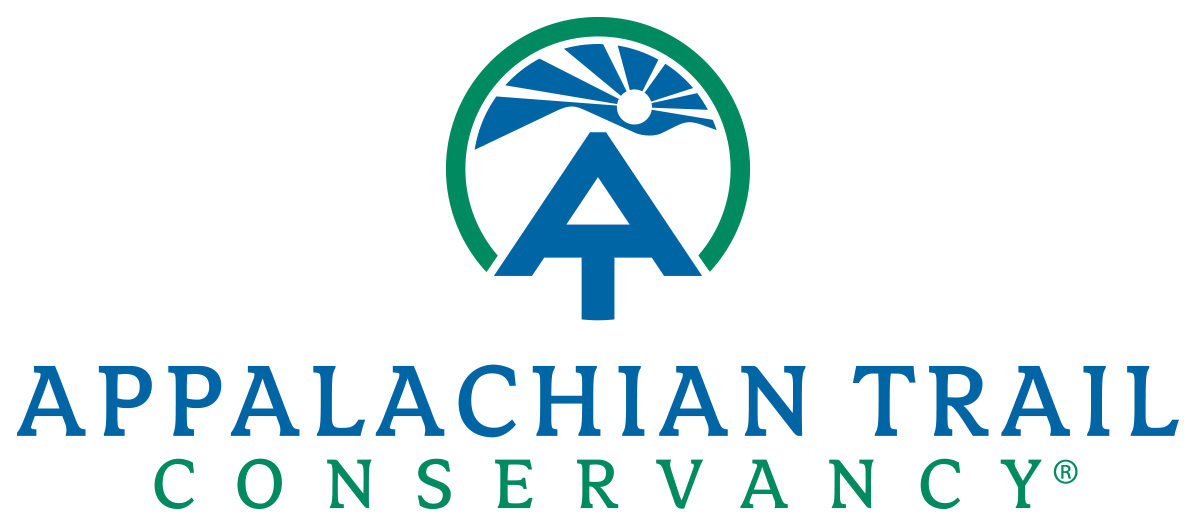
2016 Annual Report
Appalachian Trail Conservancy
2016 Annual Report
So what happened on the Appalachian Trail in 2016?
Probably the most important piece of information is the Appalachian Trail (A.T.) is more popular than ever. The number of hikers who completed the Trail last year exceeded 900, and there are clear indications that day use of the A.T. continues to increase as well. At the ATC visitor center in Harpers Ferry, West Virginia, our visitation was up more than 25 percent compared to 2015.
Why is the most popular long-distance hiking trail in the world continuing to attract more hikers? Part of the reason is because there is growing public interest in physical fitness and outdoor recreation opportunities. Medical research tells us we will live longer and better if we exercise regularly; and a recent U.S. Surgeon General’s report emphasizes fast walking is one of the best ways to improve your overall health.
We are very happy that more people want to hike on the Appalachian Trail, and it is our intent to provide the best possible Trail experience. To meet this goal we have developed a program we call “Protecting the Appalachian Trail Hiking Experience” (PATHE). Last year, this program focused a great deal of attention on long-distance hiker management. For example, we now offer a voluntary registration system for all A.T. thru-hikers, especially focussed on those who begin their journey in Georgia, so they can select a start date based on how many others plan to begin that day. We are also creating more sustainable campsites in popular areas and expanding our hiker education efforts. We opened a hiker Visitor Center in Monson, Maine, gateway town to the 100 Mile Wilderness and Baxter State Park, for the primary purpose of communicating to A.T. hikers about Baxter’s A.T. hiker permit system and their rules and guidelines for summiting Katahdin.
As we move forward with the PATHE program, the focus will shift to how we can best ensure a positive experience for day hikers and new users of the A.T. Iconic places like McAfee’s Knob in Virginia, Bear Mountain in New York, and Franconia Ridge in the White Mountains of New Hampshire are all places where the Appalachian Trail Conservancy (ATC) and our Trail maintaining clubs and agency partners are addressing the growing popularity of day hikers.
“We are very happy that more people want to hike on the Appalachian Trail, and it is our intent to provide the best possible Trail experience.”
We are also committed to protecting iconic viewsheds, precious natural resources, and cultural heritage that surround the Trail and contribute to the hiking experience. Through the A.T. Landscape Partnership (formally called the A.T. Landscape Conservation Initiative), we are growing and maturing a network of organizations and agencies that are working on the common goal of advancing land conservation along the A.T. and the lands that surround the Trail.
This past year, the ATC collaborated with new partners to connect urban and diverse youth to the Trail. We hosted our first Conservation Leadership Corps, an immersive summer program providing training for young people (ages 18-25) interested in careers in conservation and looking to build the skills necessary to begin working in the field. Members were selected from urban areas across the country through a partnership with Groundwork USA.
We also were successful in forming a new partnership with Student Conservation Association, Groundwork USA, Outdoor Afro, and Latino Outdoors. Partners are developing a collaborative model bringing Washington, D.C. stakeholders to the Trail to foster meaningful engagement of communities of color regarding National Parks awareness, access, environmental stewardship, and career opportunities.
In so many ways, the Appalachian Trail is a success model for our country and the world. We continue to feature a very successful and unique partnership with more than 70 public agencies, 31 Trail maintaining clubs, and more than 40 designated A.T. Communities. We face a formidable management challenge as more people want to enjoy our Trail for an afternoon, a weekend, or all 2,190 miles. We ask for your support in this important journey.
Ronald J. Tipton
President & CEO
Sandra Marra
Chair
Contents
2016 Annual Report
The Appalachian Trail Conservancy’s mission is to preserve and manage the Appalachian Trail — ensuring that its vast natural beauty and priceless cultural heritage can be shared and enjoyed today, tomorrow, and for centuries to come.
The Appalachian Trail Conservancy’s vision is to connect the human spirit with nature — preserving the delicate majesty of the Trail as a haven for all to enjoy.
We are committed to nurture and protect this sacred space through education and inspiration. We strive to create an ever-expanding community of doers and dreamers, and work to ensure that tomorrow’s generations will experience the same mesmerizing beauty we behold today.
Appalachian Trail Conservancy Story
To imagine, the Appalachian Trail (A.T.) all started with a single vision 96 years ago. Benton MacKaye, the founder of the A.T., proposed a trail that would extend along the eastern coast of the United States. What he proposed was not just a simple footpath, but something far greater.
“High and dry above the stupendous detail of our job we should hold the reason for it all. This is not to cut a path and then say –‘Ain’t it beautiful.’ Our job is to open a realm. This is something more than a geographical location – it is an environment.” – Benton MacKaye
The Appalachian Trail is not just a path in the woods; it is an environment that provides an extraordinary experience for millions of people to enjoy every year. Traveling from Georgia to Maine, the A.T. stretches for over 2,000-miles, taking the reins as the longest hiking-only footpath in the world. From mountains that spark awe into the eyes of many, to flowing streams that trickle along its majestic countryside; the A.T. provides a special place where people can escape and relish in one of America’s greatest treasures.
The reason for the Trail’s existence is the unique experience that it provides —an experience worth protecting. The A.T. is a place of life-changing discovery. We believe everyone should have the opportunity for that experience, which is why we want to ensure the Trail remains protected for centuries to come.
While the A.T. was first completed in 1937, we must continue to be diligent stewards of this iconic National Scenic Trail to protect it for future generations. In 1925, the nonprofit Appalachian Trail Conference — now known as the Appalachian Trail Conservancy (ATC) — was formed. The ATC works in partnership with the National Park Service, the U.S. Forest Service, 31 Trail maintaining clubs, over 6,000 volunteers, and state and local agency partners to preserve and protect the A.T. and its surrounding lands.
As guardians of the Trail, we manage a greenway of more than 250,000 acres, protect hundreds of threatened and endangered species, advocate for the broader protection of the Trail’s natural and cultural resources, connect and engage with a younger, more inclusive populations to empower them to become future stewards of the Trail, and rally local communities to help protect the A.T.
Today, the A.T. is more popular than ever. More and more people are experiencing the Trail in record numbers. While we are happy that more people are hiking the A.T., we want to make sure we continue to provide the best possible Trail experience. While times have changed, our mission will always remain the same — to preserve and manage the Appalachian Trail.
While times have changed, our mission will always remain the same — to preserve and manage the Appalachian Trail.”
We uphold the highest standards for the protection and management of the Appalachian Trail (A.T.) to ensure that it can be shared and enjoyed well into the future. We have a unique cooperative- management partnership with the National Park Service and the U.S. Forest Service at national, regional, and district levels, a variety of agencies in 14 states, a few other federal agencies, and even some counties and other local communities. It is with these partners, in combination with our vast volunteer network, that we are able to maintain and protect this iconic Trail.

Appalachian Trail Conservancy
2016 Annual Report



Staff
Our staff is made up of only the most talented and passionate people. Every day we get to make a difference in the world by doing a job we love — protecting the Appalachian Trail.
Ronald J. Tipton
President & CEO
Stacey J. Marshall
Vice President of Finance & Administration
Tiffany E. Lawrence
Vice President of Membership & Development
Laura Belleville
Vice President of Conservation & Trail Programs
Brian B. King
Publisher
Javier Folgar
Director of Marketing & Communications
Sandra Marra
Chair
Greg Winchester
Vice Chair
Elizabeth (Betsy) Pierce Thompson
Secretary
Arthur Foley
Treasurer
Beth Critton
Norman P. Findley
Edward R. Guyot
Mary Higley
Daniel A. Howe
Robert Hutchinson
John G. Noll
Colleen T. Peterson
Jennifer Pharr Davis
Rubén Rosales
Nathanial Stoddard
Advisory Circle
Our Advisory Circle is a diverse group of individuals who provide thoughtful leadership, expertise, and significant outreach on behalf of the organization in order to fulfill our mission.
Hon. C. Stewart
Verdery, Jr.
Chair
Donald Ayer
Colin Beasley
Sonja Carlborg
Kathi Cramer
Constance I. DuHamel
Wendall T. Fisher
Lisa Koteen Gerchick
Destry Jarvis
Jessica Herrera-Flanigan
R. Michael Leonard
Robert Rich
Shooter Starr
Stewardship Council
The Stewardship Council oversees the Appalachian Trail Conservancy (ATC) policy development and programs related to stewardship of the Appalachian Trail and surrounding lands. The council advises the ATC’s conservation program on overall strategic direction and recommends policy to the Board of Directors for consideration. The council also serves as the interface among the Regional Partnership Committees, Trail maintaining clubs, the ATC staff, agency partners, and the Board of Directors.
Beth Bryan Critton
Ashton Cole
Cosmo Catalano
Delia Clark
Fred Tutman
Judith McGuire
Rebekah Young
Roger Moore
Ryan Smith
Susan Charkes
Tom Banks
Tom Mullin
Tom Ottinger
Trudy Phillips
Next Generation Advisory Council
Members of the Next Generation Advisory Council help the Appalachian Trail Conservancy (ATC) reach a younger audience and encourage them to become involved in the management, preservation, and stewardship of the 2,190-mile Appalachian Trail. The ATC is dedicated to involving millennials and seeking input from this generation to explore effective methods of advocacy, conservation, and the creation of stewardship ethics.
Adam Stewart
Alivia Acosta
Allie Thompson
Brady Adcock
Evan Liddy
Grace Anderson
Kayla Carter
Kelly Garvy
Kristen Murphy
Marcela Maldonado
Michael Leavitt
Oforiwaa Pee
Agyei-Boakye
Olympia Bowker
Stephen Eren
Tony Richardson
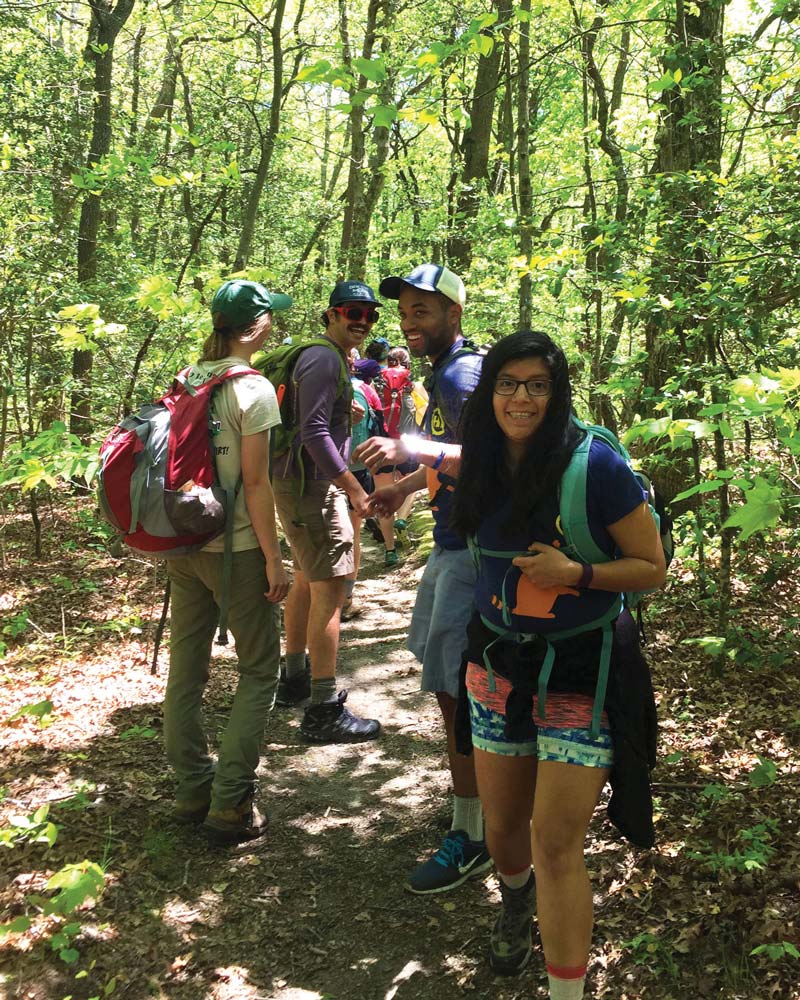
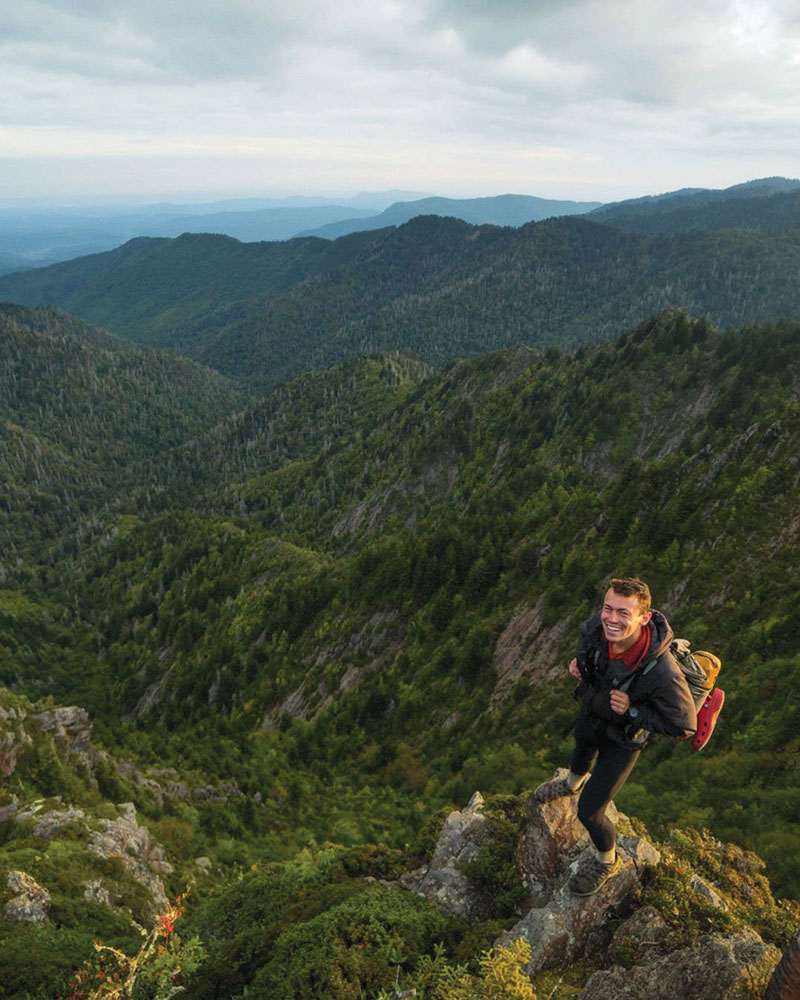
Appalachian Trail Conservancy
2016 Annual Report



Volunteers play a vital role in protecting and maintaining the Trail. Every year, the A.T. sees increased use in all forms – day hikers, weekend hikers, and long-distance hikers.
In 2016, 6,488 Appalachian Trail volunteers dedicated 256,689 hours of their time to benefit the Trail. That contribution is valued at $6 million (Independent Sector average value of volunteer time). These volunteers are an integral part of the cooperative management of the A.T., working not only to keep the Trail and its shelters and other facilities in good shape for all to use, but in many other ways, including helping protect the Trail corridor from unauthorized activities, managing invasive plants and monitoring rare ones, reaching out to local communities and schools, and providing education and information to hikers.
Trail Maintaining Clubs
We work with 31 Trail maintaining clubs to manage the Appalachian Trail. Volunteers from these clubs are responsible for most of the day-to-day work of keeping the A.T. open. In addition to Trail maintenance, club volunteers build and repair shelters and other structures, monitor and protect the Trail corridor, monitor and manage rare plants and invasive species, develop management plans for their Trail sections, participate in our regional partnership committees, and support outreach and education programs. We are thankful for our volunteers — some of the most dedicated friends and supporters to the A.T.
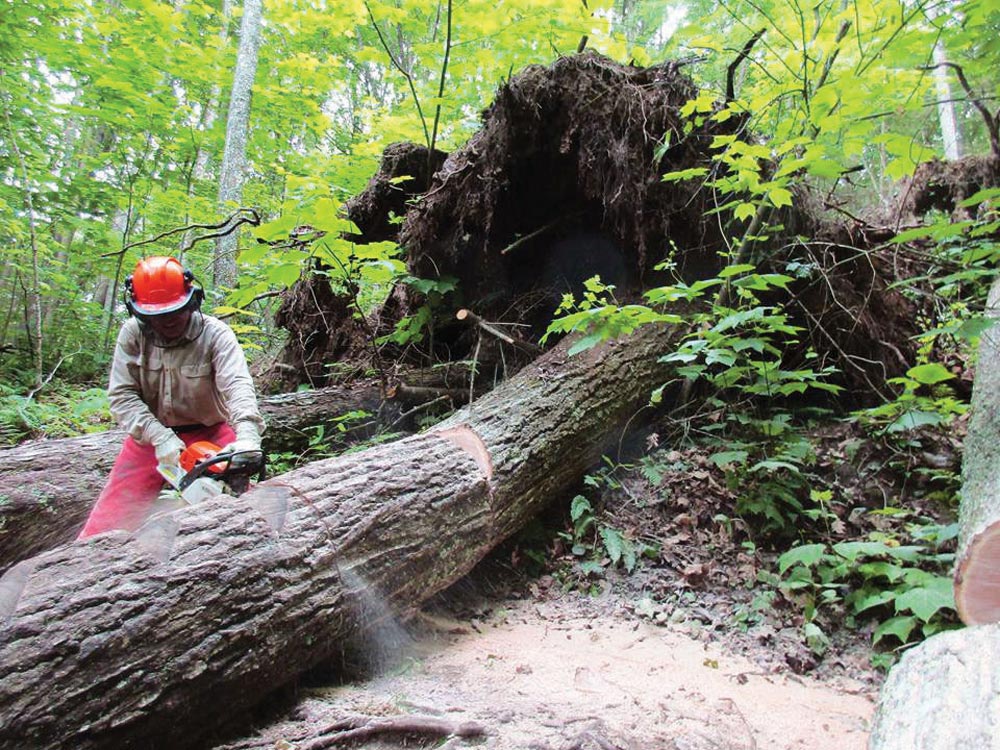
Natural Bridge Appalachian Trail Club
Maine Appalachian Trail Club
Appalachian Mountain Club
Randolph Mountain Club
Dartmouth Outing Club
Green Mountain Club
AMC – Berkshire Chapter
AMC – Connecticut Chapter
New York-New Jersey Trail Conference
Wilmington Trail Club
Batona Hiking Club
Keystone Trails Association
Allentown Hiking Club
Cumberland Valley Appalachian Trail Club
York Hiking Club
Mountain Club of Maryland
Potomac Appalachian Trail Club
Old Dominion Appalachian Trail Club
Tidewater Appalachian Trail Club
AMC – Delaware Valley Chapter
Outdoor Club at Virginia Tech
Roanoke Appalachian Trail Club
Piedmont Appalachian Trail Hikers
Mount Rogers Appalachian Trail Club
Tennessee Eastman Hiking and Canoeing Club
Carolina Mountain Club
Smoky Mountains Hiking Club
Nantahala Hiking Club
Blue Mountain Eagle Climbing Club
Georgia Appalachian Trail Club
Susquehanna Appalachian Trail Club
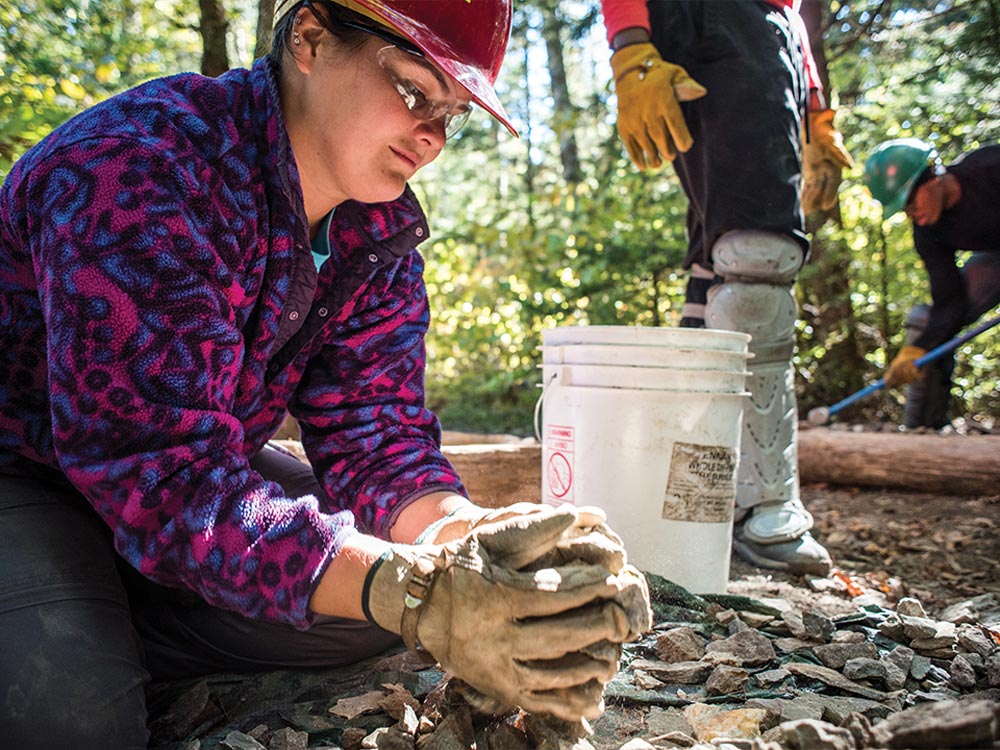


By the end of 2016, there were 42 designated A.T. Communities, with community businesses and individuals serving as A.T. Community Supporters, hike service providers, and champions for the A.T. and its sustained protection.


The Appalachian Trail Conservancy’s (ATC) resources were primarily focused on adding capacity to our programs and upgrading our IT systems. By the close of 2016, the ATC increased net assets by $1,239,766 across all funds and experienced an overall increase in cash and cash equivalents by about $296,000 (most of which were from operating activities.) By all accounts 2016 was a strong financial year for the ATC.
Our General Fund increased net assets by $153,366. Some of this increase is due to budgeted investments from the David N. Startzell Stewardship Fund for furthering our Strategic Plan. The Land Acquisition Fund increased net assets by $101,909, due primarily to contractual funds received and from real and unrealized gains on our investments. Our Life Membership Fund increased net assets by $109,219 with a majority of this increase due to investment income and real and unrealized gains on investments. Our Monitoring Fund had a modest increase in net assets of $14,769, due primarily to our investment returns.
Although,in 2016, the David N. Startzell Stewardship Fund invested significantly in our strategic plan, the fund still increased in net assets by $927,663. This increase was due to two large bequests received during the year. The Annuity Fund decreased in net assets by approximately $67,160 due to the maturity of three charitable gift annuities; following maturity, the remainders were transferred to the David N. Startzell Stewardship Fund.
As evidenced by the increase in Net Assets, the ATC’s investments experienced a robust year. Our portfolio increased in value over 2015 by $837,120. The ATC’s investment managers, Brown Advisory, report the ATC’s total portfolio performance for 2016, net of fees, was 7.6%. The ATC’s 2016 financials were audited by Yount, Hyde, and Barbour, P.C. and were given an Unmodified (or Clean) opinion.




Statement of Financial Position
Corporate, Foundation, and Nonprofit Partners
We are grateful to the following corporate, foundation, and nonprofit partners that recognize the importance of the Trail and have joined our efforts to protect it for generations to come.
Eagles Nest Outfitters, Inc.
The Conservation Alliance
Hydro Flask
REI
The Kendeda Fund
The Whitehead Foundation, Inc.
American Backcountry
Danny Cramer Foundation
Harney & Sons
HIKE for Mental Health
L.L. Bean Inc.
Mckee Foods Corporation –
Sunbelt Bakery
UPS
XL Catlin
American Trucking Associations
Appalachian Power
AT Passport
Bavarian Inn
Bretmor Headwear
Brookfield White Pine Hydro LLC
Brown Advisory Charitable
Foundation, Inc.
Darn Tough
Garden Homes Management
Corporation
Geiger Group
Honeywell International, Inc.
Monument Policy Group
National Environmental
Education Foundation
North River Outdoors
Northwest Federal Credit Union
Osprey Packs
Outdoor Edutainment, LLC
Point6
ROLA – Cequent Consumer
Products Inc.
Six Moon Designs
The Betterment Fund
The Ridges Resort & Marina
Turkey Hill Dairy
UMB – CardPartner
Ursack
Vasque Footwear
Annual Fund Leadership Circle
Leadership Circle members are champions of the Appalachian Trail. They support our core programs and ongoing commitment to preserve and manage the Trail.
Estate of Lenny Bernstein
Estate of Robert J. Shlifer
Estate of Damon Bee
Stephen Corman
Estate of Carl Thompson
Greg# and Jan Winchester
Robert P. Coon
Sarah T. Darrow
Erika Duffy
William W. Farkas
Daniel and Laura Gold
Estate of Gordon and Dorothy Howell
Ruben# and Valerie Rosales
Ann Satterthwaite
Anonymous (3)
Liz and Colin^ Beasley
Daniel Collins
Steve and Kathi^ Cramer
Courtney A. Daragan
Norman# and Adrienne Findley
Edward J. Gehringer
Mary Higley# and Kyran Kennedy
Robert# and Catherine Hutchinson
Peter and Cynthia Kellogg
Robert G. Maxfield
Estate of Mary J. Ottentad
Robert “Rhea” Patrick
Phileona Foundation
David H. Raymond
Jennifer Reilly
Fred and Alice Stanback
Ron Tipton# and Rita Molyneaux
Betsy# and Bob Thompson
Dudley and Barbara White
Anonymous
Tockie Baker
Robert W. Becker
Bennett and Anne Cowan
Beth Bryan Critton#
Rich and Catharine Daileader
Audrey H. Duane
Sam Ferguson
Arthur# and Denise Foley
Pamela and James Grange
Green Mountain House Hiker Hostel
Helen J. Hauser
Brian B. King*
Sandra Marra# and Chris Brunton
L. Hardy Mason
C. Arthur Morrow
Peter and Sally Parsonson
Nathaniel Stoddard#
Mary E. Szpanka
Hon. C. Stewart Verdery, Jr.^
American Backcountry
In the winter of 1993, Frank Hintz drove to Harpers Ferry, West Virginia with the first ever American Backcountry T-shirt designs. Frank walked into the headquarters of the Appalachian Trail Conservancy (ATC), placing all hope of the success of his new business on the response of the ATC’s publisher, Brian King. Brian decided to try the new designs and prompted Frank to attend the annual Appalachian Trail Day’s festival in Damascus, Virginia.
After talking with many thru-hikers and selling a collection of shirts at the event, Hintz, a hiker himself, realized how much the business spoke to the essence of the Trail.
In 1995, American Backcountry moved from being just the “A.T. shirt guys” to the next level after listening to the request of one of their earliest customers, Peter Crane. Peter expressed that he wanted a shirt with a topographic map and a list of Mount Washington’s popular hiking trails on the back. The company experienced instant success after bringing the customer’s idea to life. Since then, they have become the vendor of choice to many of America’s leading Outdoor Retailers, National Park Concessions, and Boy Scouts groups by developing destination-specific T-shirts for folks across the country.
 In 2001, American Backcountry became the first company of their kind to specialize in printing graphics on moisture wicking T-shirts. From there, they continued to develop new print technologies to offer their customers the best apparel and printing methods available. American Backcountry was the first to market a line of graphics to the Outdoor Industry that used sublimation and direct-to-garment technologies. In 2004, they began manufacturing American Backcountry moisture wicking T-shirts and continue to build on their expanding catalog of graphics that appeal to a wide variety of clients.
In 2001, American Backcountry became the first company of their kind to specialize in printing graphics on moisture wicking T-shirts. From there, they continued to develop new print technologies to offer their customers the best apparel and printing methods available. American Backcountry was the first to market a line of graphics to the Outdoor Industry that used sublimation and direct-to-garment technologies. In 2004, they began manufacturing American Backcountry moisture wicking T-shirts and continue to build on their expanding catalog of graphics that appeal to a wide variety of clients.
American Backcountry has never chosen to take the easy way out. Where other T-shirt companies simply put a name on a generic mountain and expect their customers to be satisfied, American Backcountry strives to go the extra mile. Their customers appreciate the difference between “any old mountain” and the mountain they just climbed, including those located on the A.T. Today, Frank and his crew at American Backcountry give the ATC nearly $10,000 in revenue to help support conservation and education efforts along the Trail. They are invested in the advancement of the ATC and look forward to a long corporate partnership.
Our Supporters
2016 Annual Report
Rob Hutchinson
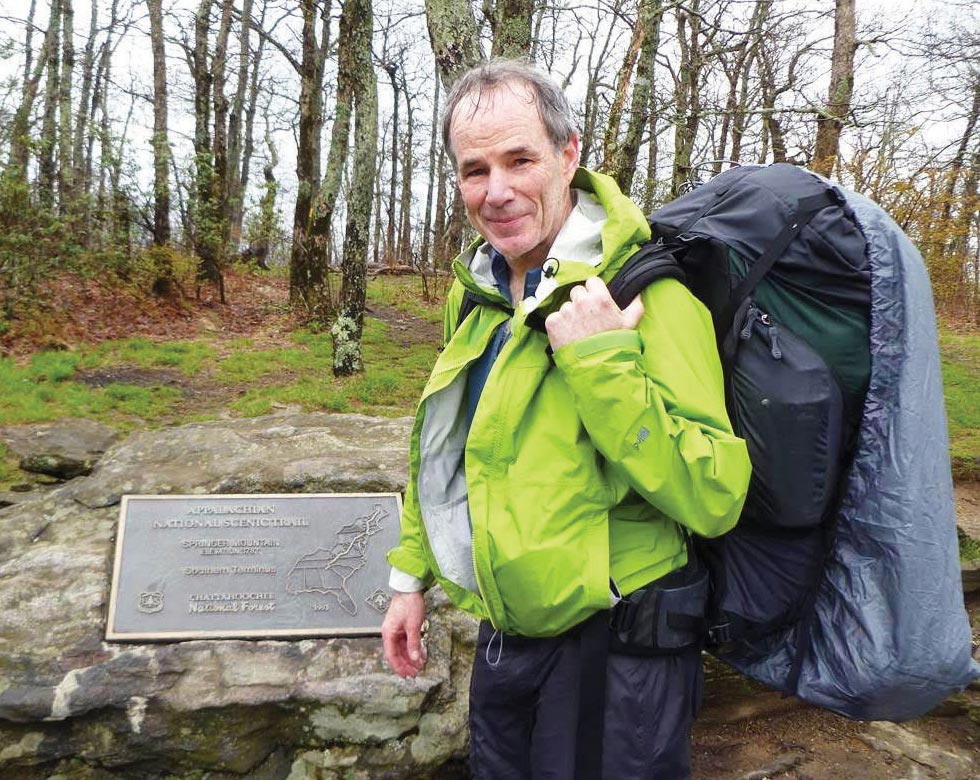
Rob Hutchinson, from Atlanta, Georgia, has been hiking, running, climbing, and dedicating himself to the outdoors all of his life. First introduced to outdoor adventures (and the A.T.) on family camping trips in the mountains of North Carolina, Virginia, New Hampshire, and Maine, Rob spent a week backpacking on the A.T. with his best friend while still in high school. Since then, often accompanied by his wife Catherine and/or their two sons, he has summited all 54 of the 14,000-foot mountains in Colorado and visited the highpoint in each of the 50 states except in Alaska where his team was weathered out at Denali. He’s hiked rim to rim to rim in the Grand Canyon and been to the summit of Kilimanjaro. He also ran in 25 marathons, including Boston four times.
Rob remembers being on the A.T. as a very young child, and says the Trail “sustained” him and Catherine while he was in graduate school in the Northeast. Though they spent Rob’s early career — first with Prudential Insurance Company and then Goldman Sachs — living far from the Trail, he’s been an Appalachian Trail Conservancy (ATC) member since the early ’80s and immediately re-engaged with the Trail when his family moved to Atlanta in 2002.
Rob has served as a member of the ATC’s Board of Directors since 2014 — expertly chairing the Investment Committee in the development of Investment Policy Guidelines. He also serves on the Facilities Task Force and the Membership and Development Committees. The task force has cataloged and categorized all the facilities the ATC owns or rents to determine how each facility does (or doesn’t) fit into the Strategic Plan. The Membership and Development Committee advises and assists in all aspects of fundraising at ATC – from building connections with foundations, corporations, and individuals, to evaluating new revenue streams and budget projections.
Rob has chosen to give his time — between summits and marathons, his career, and his family — to the ATC because the A.T. is “a national treasure, maintained cooperatively by diverse people and organizations coming together,” he says. “The A.T. is a remarkable example of what the people in this country are capable of achieving.” Rob and Catherine also provide generous financial support to the ATC and see it quite simply as a “contribution to the greater good.”
Rob says of his commitment: “I hope others will come to the same conclusion I have. If the Trail is important to them, they’ll be moved to help in some way.”
